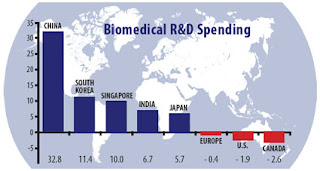Putting More Runners in the Race

When I heard that Dr. Jim Allison won the Nobel Prize the other day, it hit me that for breakthroughs in medical research to happen, we need to have as many runners in the race as possible. It makes sense right? The more scientists we have in the field researching cancer the better chance we have that one (or more) of those researchers in the lab will hit on an idea that will lead to more advanced studies. And the more new studies undertaken by labs - the more runners in the race - the closer we get to having real breakthrough treatments get to patients. Just like in a marathon - the more runners who train and qualify for the race, the more who are likely to cross the finish line. In fragile X, FRAXA Research Foundation has been putting more runners into the race for many years. In early years there was not much known about fragile X. So FRAXA poured millions of dollars into basic research at labs around the world. The idea was that the more brilliant minds in the laboratory we




